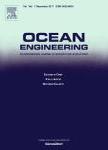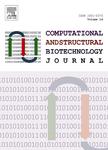版权所有:内蒙古大学图书馆 技术提供:维普资讯• 智图
内蒙古自治区呼和浩特市赛罕区大学西街235号 邮编: 010021
T=题名(书名、题名),A=作者(责任者),K=主题词,P=出版物名称,PU=出版社名称,O=机构(作者单位、学位授予单位、专利申请人),L=中图分类号,C=学科分类号,U=全部字段,Y=年(出版发行年、学位年度、标准发布年)
AND代表“并且”;OR代表“或者”;NOT代表“不包含”;(注意必须大写,运算符两边需空一格)
范例一:(K=图书馆学 OR K=情报学) AND A=范并思 AND Y=1982-2016
范例二:P=计算机应用与软件 AND (U=C++ OR U=Basic) NOT K=Visual AND Y=2011-2016


Many of previous long-term strain modeling methods for bridges mechanically various data correlations, limiting their applicability to specific types of bridges. This study develops a more generalizable approach by quantitatively analyzing correlations between data using Pearson correlation coefficient (PCC) analysis to rationally select input data. A hybrid DL and autoregressive model with attention mechanism (DL-AR-ATT) model is employed as modeling tool, which has been demonstrated to outperform most of the state-of-the-art deep learning models. This study utilizes measured strain data from both concrete and steel box-girder bridge, along with air temperature data, to verify the modeling and generalizability performance of the proposed method. The results indicate that the combination of air temperature (AT) and atmospheric pressure is the optimal input combination for long-term strain modeling in bridge structures. However, when strain data is also included as input, the combination of strain data (with stronger correlations to the target modeling strain) and AT is the optimal input combination. Furthermore, the proposed method outperforms existing long-term strain response modeling methods for bridges in terms of modeling and generalizability performance.


电话和邮箱必须正确填写,我们会与您联系确认。
版权所有:内蒙古大学图书馆 技术提供:维普资讯• 智图
内蒙古自治区呼和浩特市赛罕区大学西街235号 邮编: 010021

暂无评论